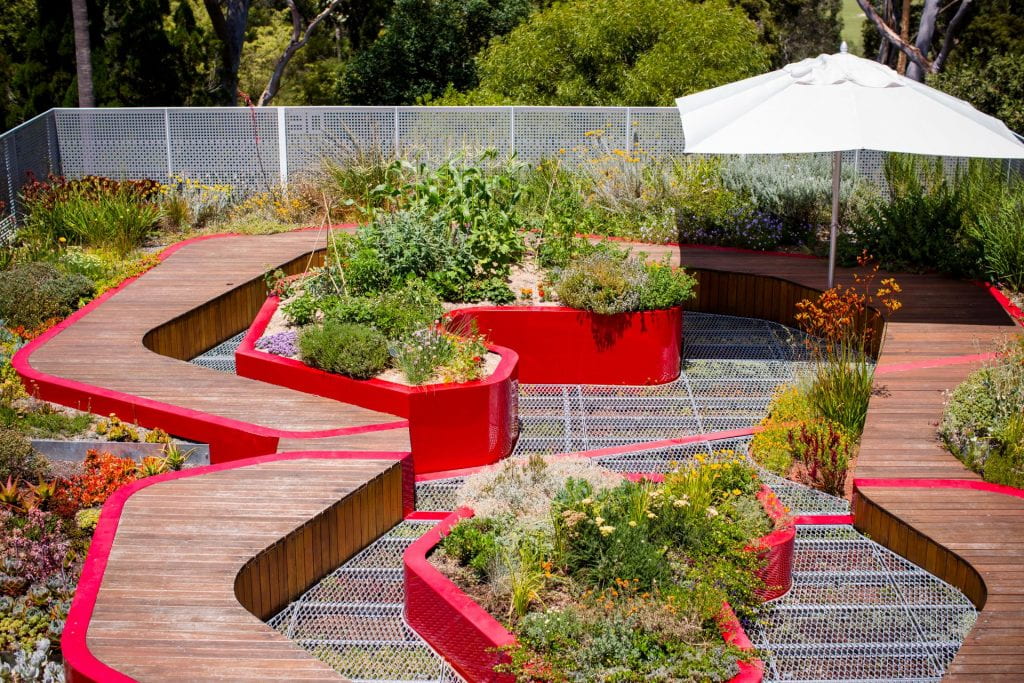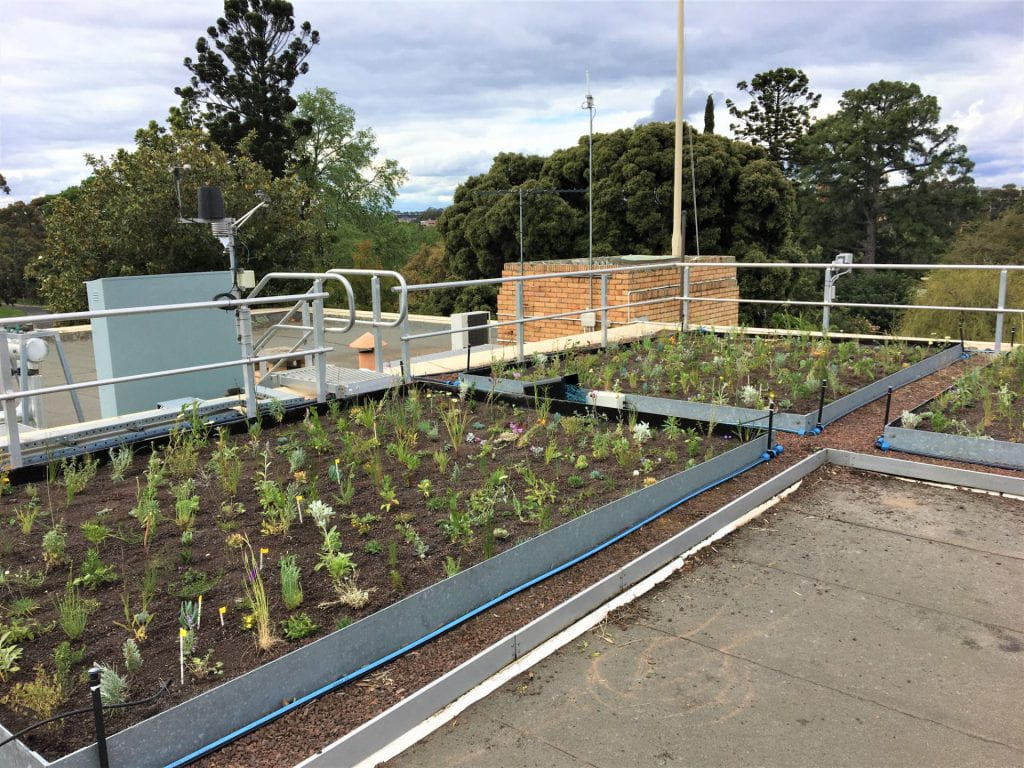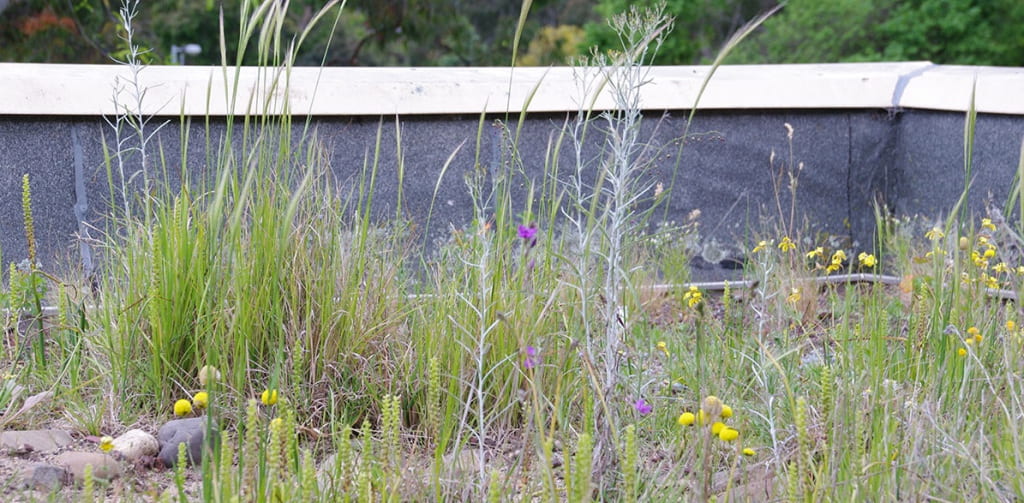Burnley’s Living Green Roofs

The Burnley Green Roofs project is Australia’s first dedicated green roof demonstration, training and research facility. Comprising three green roofs built for Australian conditions, it provides opportunities for teaching, community engagement activities, continuing professional and industry development.
RESEARCH at Burnley is building the evidence of green roof benefits.

Demonstration Green Roof
The demonstration green roof (166 m²) is located 6.6 metres above ground on the heritage-listed Burnley Campus Hall. It is a highly accessible visually attractive landscape providing interpretation of different green roof types, substrates and plants. There are 14 separate planting zones across the site, according to substrate depth and irrigation requirements.
There are five different substrate depths across the roof – 10, 15, 20, 25 and 30 cm and four lightweight substrates designed for successful plant growth have been used. Components used include scoria, bottom ash (power station waste/Enviroagg®), crushed roof tiles, perlite, coir (coconut fibre/horticultural grade), pine bark and zeolite.
With over 200 different plant taxa, and 3000 individual plants in total! This roof demonstrates the variety of plants suitable for green roofs. Plants have been selected on low water use and results from our research trials.
Design Award Winner The Demonstration Green Roof was designed through a collaboration between the University of Melbourne, design practice HASSELL and specialist green roof contractors, Junglefy. Winner AILA 2014 Design Award (Vic), Winner 2015 Victorian Sustainability Awards – Landscape Category.

Research Green Roof
The research green roof (80 m²) consists of four quadrants, three with different substrate depths (10, 15 and 20 cm) and one single quadrant without a green roof.
This roof has been designed for plant performance trials and to undertake experiments. Current research is looking at plant performance of different native and exotic species and investigating how substrate depth, temperature and moisture retention influence vegetation response. Find out more about this project here.
We will be sharing our live data feed from the Burnley Research Green Roof here soon.

Biodiversity Green Roof
The biodiversity green roof (52 m²) has been designed to attract and provide habitat for lizards, insects and birds. Features on the roof that are known to encourage and sustain biodiversity include:
- Indigenous plants representative of Victoria’s endangered native grasslands, including known larval food plants or nectar sources for butterflies and native bees.
- A small ephemeral pond and shallow creek bed which flows during rain events using stormwater run-off.
- Different substrates types and depths to facilitate micro-habitats for invertebrates and to maximise ecological variety. The main substrate used is a scoria mix but smaller areas of sand, gravel, and rubble have also been included.
- Specific habitat features to provide habitat, including logs and sand for insect burrowing, hollow twigs for native bee nesting, and rocks, pavers, tiles and pots for reptile and insect basking.
Research
Find out more about our current PhD green roof projects
- Enhancing plant water storage on lightweight green roofs Lubaina Soni
- Interactive effects of physical stressors on green roof plant survival and function Bihan Guo
- Developing a plant palette of Australian annual species suitable for green roofs in Mediterranean-like climates Zahra Saraeian
- Connectivity values of green roofs for urban biodiversity Julia Schiller
- Spontaneous green roof plants – how survival strategies and green roof environment influence success Dean Schrieke
Green Roof Fact Sheets
